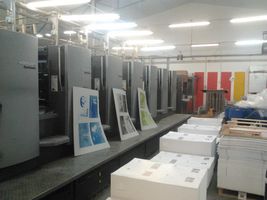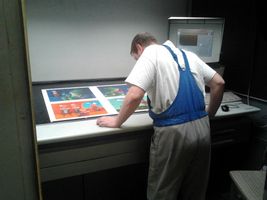Paper Theater in Action Tell Stories Differently, Check Out Our Blog
Emily Johnson review
Storytelling and Attention Disorders
How Can Papertheater Help?
In today’s fast-paced world, capturing a child’s attention can be a challenge, especially for those with attention disorders such as ADHD. Traditional reading methods often fail to hold their interest, making it difficult for them to engage with stories. However, the Paper Theater storytelling technique offers a unique and effective way to keep children focused while simultaneously developing their cognitive and social skills.
Why Papertheater?
Papertheater is a traditional Japanese storytelling method that uses illustrated story cards displayed in a wooden frame. The storyteller slides the cards one by one while narrating the story, creating a dynamic, visual, and interactive experience for the audience. This approach is particularly effective for children with attention difficulties for several reasons:
Visual Stimulation:
The large, colorful illustrations immediately capture and sustain children's interest.
Structured Storytelling:
The sequential unveiling of images helps maintain focus and provides a clear narrative structure.
Engaging Interaction:
The storyteller can involve children by asking questions, encouraging predictions, and prompting discussions.
Tactile and Physical Elements:
Handling the story cards and participating in the storytelling process adds a sensory dimension that keeps children engaged.
How Papertheater Supports Children with Attention Difficulties
Enhances Focus and Concentration
The structured presentation of Papertheater stories helps children stay on track, reducing distractions and keeping their attention on the unfolding story. Since the images appear gradually, children naturally anticipate what will come next, reinforcing their ability to focus for extended periods.
Encourages Active Participation
Unlike passive reading, Papertheater invites children to take part in the storytelling process. They can help turn the cards, answer questions, or even retell parts of the story. This active involvement makes the experience more immersive and memorable.
Supports Comprehension and Language Development
Children with attention difficulties often struggle with following complex narratives. The combination of visuals and spoken words helps them better understand the story, improving their listening skills and language development.
Reduces Stress and Anxiety
For some children, focusing on a book with dense text can be overwhelming. Papertheater provides a stress-free alternative that allows them to engage with stories in a way that feels natural and enjoyable.
Creates a Predictable and Safe Learning Environment
Children with attention difficulties benefit from structured routines. Papertheater follows a clear and consistent format, providing them with a familiar and reassuring learning experience.
How to UsePapertheater Effectively
Choose engaging stories:
Select stories with clear, vibrant illustrations and simple yet engaging narratives.
Encourage participation:
Ask open-ended questions to involve children in the storytelling process.
Use voice modulation and expressions:
Vary your tone and expressions to bring the story to life.
Allow children to take the lead:
Let them turn the cards or even try telling the story themselves.
Incorporate movement:
For more active engagement, integrate gestures and role-playing elements.
Conclusion
Papertheater is more than just a storytelling tool—it is an educational and therapeutic resource that can make a significant difference for children with attention disorders. By integrating this method into learning environments, educators and parents can create an engaging and inclusive space where every child can enjoy the magic of stories while developing essential skills.
Would you like to try Papertheater in your classroom or home? Share your experiences and let us know how it worked for your child!


